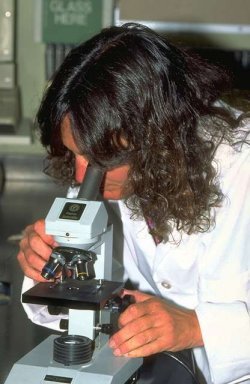
| HealingWithNutrition.com 1-800-943-1123 | Home | SiteMap | Education | Products |

Attention Deficit Disorder
|
|---|
|
ADD Facts and Statistics For a term that was hardly known before the 1960's, learning disability has come to include everything from unexplained behavior patterns to clinical autism and everything in between. Learning disabilities have emerged as one of the most wide-ranging medical problems of children who live in developed countries where communicable disease is no longer a major threat.
Frequently, children with ADD/ADHD characteristics also have emotional instability. They display outbursts ranging from excitement to extreme anger, and are an enormous challenge for parents and educators who are not equipped to handle such situations. In distress, parents seek the advice of family physicians. The doctor, because of a lack of expertise in this field, frequently prescribes drugs in an attempt to corral the explosive behavior and decrease the learning handicap.
This disorder has been reported to affect up to 20% of school-age children, but a conservative 5% figure is more widely accepted since the study that published that figure followed "improved diagnostic criteria." Boys show a 10 times higher incidence of ADD/ADHD than do girls. The drug "Ritalin" is the most common medical treatment with over 2 million American children (mostly boys) taking the drug. "Ritalin" prescriptions to children are controversial and the possible dangerous side effects are hotly debated. The following excerpt from the Physician's Desk Reference makes it easy to see why Ritalin is so controversial: RITALIN DRUG WARNINGS: "Sufficient data on safety and efficacy of long-term use (greater than 24 months) of Ritalin in children are not yet available ... suppression of growth (ie weight gain, and/or height) has been reported with the long-term use of stimulants in children. Therefore, patients requiring long-term therapy should be carefully monitored."
|
ADD/ADHD Recognition and Associated CausesMany learning disabilities go unnoticed because the behaviors are so subtle. A very sick child is generally accommodated, often cared for and helped; but the child with mild to moderate learning disabilities is frequently misunderstood and ridiculed. Their parents, teachers, siblings, relatives and friends often use them as scapegoats. Other children become a source of extreme emotional cruelty. When a classmate falls behind the accepted norm his peers may make remarks like "She talks like a baby", or "He can't even remember his own phone number."
| ||||||
ADD Nutritional Support StrategiesOur ADD Program will give you additional nutrient and lifestyle information. We also include the Center for Disease Control Framework for Attention-Deficit/Hyperactivity Disorder Nutritional Support Strategies to help you understand on a large scale what the government is doing. You can also seek a professional who specializes in treating people with attention deficit disorders. Dr. Steven Whiting of the Institute of Nutritional Science in San Diego strongly advocates nutritional options for ADD/ADHD. The excerpts below are from his booklet "Trace Minerals and Learning Disabilities--A Third Opinion" and include explanations that will help you understand and evaluate ADD/ADHD circumstances: Other resource groups are: Attention Deficit Disorder Association (ADDA) Children With Attention-Deficit Disorders (CHADD) |
Related Links
|
|
We welcome all Email!
©Copyright 1999-2001 Personal Health Lifestyles, Inc. All rights reserved. |